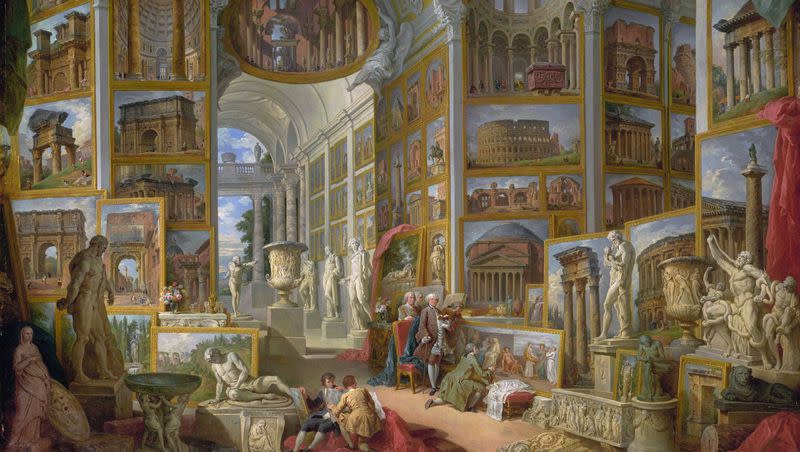Archaeologists unearthed a Roman mausoleum at a London construction site — here’s what was in it

Most of ancient Rome remains a mystery to archaeologists — but a recent discovery can help provide a little more of a glimpse into the past.
Archaeologists in London discovered what the Museum of London Archaeology has described as “the most intact Roman mausoleum ever to be discovered in Britain,” per CNN.
Anciently, mausoleums were often intricate buildings used to house the remains of wealthy people who could afford to build one. Archaeologists believe the recently discovered mausoleum was used by wealthier Romans because it’s two stories high, per The Guardian. It’s possible it was used as a family tomb.
Related
This discovery is expected to provide valuable information about the ancient Romans in Britain — “the discovery of a mausoleum with such a great level of preservation has really been the icing on the cake,” Antonietta Lerz, a senior archaeologist at the museum, told CNN,
The area around the mausoleum contained traces of over 80 Roman burials, in addition to coins, fragments of pottery and other small items, according to CNN.
The site where the mausoleum was discovered, Liberty of Southwark, is being restored and prepared so it can be displayed to the public permanently, per BBC. There’s a three-dimensional model available to see what the site looks like.
How much of ancient Rome is undiscovered?
During its golden age, ancient Rome was home to tens of millions of people — exact numbers are unknown — and subsequently, there were thousands of apartments, homes, businesses and other structures.
The reality is most of those are undiscovered.
Even though the ancient Roman empire fell, people continued to live in the area — and still do today. As a result, people built on top of the ruins and the vast majority of the remaining parts of the ancient city and empire are underground. City Wonders said it’s possible 90% of the remaining ruins of ancient Rome are buried around 30 feet below current street level.
It also can be difficult to understand the ruins that archaeology has uncovered. Smithsonian Magazine wrote about Italian archaeologists Paolo Carafa and Andrea Carandini, “A number of Rome’s monuments and historical buildings have yet to be thoroughly studied, they say. Even the Palatine, where they spent 30 years digging, could use more research; less than 1% of it is thoroughly known in full archaeological terms, with material documented down to the virgin soil.”
Like Carafa and Carandini said, these ruins haven’t been studied yet, which contributes to our limited understanding of the ancient past. Another factor is the lack of context around what does remain.
To use a modern example, imagine if 2,000 years into the future, archaeologists uncovered the ruins of a bathroom which had a preserved pedestal sink. If archaeologists discovered a preserved pedestal sink with bits remaining around it, it may be difficult to tell what the use of the sink was. Was it used in a washroom? Was it used in a religious or ritual context? Was it used in a kitchen?
If the pedestal sink can’t be contextualized by other remains or other remains don’t provide definitive answers, it can be hard to see the purpose of the sink. Furthermore, if the main forms of records are lost or were destroyed, using information from records to understand the purpose of the pedestal sink can also be difficult.
In short, context is an important part of understanding remains and ruins — and since the ancient world has a lot of missing context, it can be difficult to ascertain what certain ruins were. Other times, especially in the case of well-preserved and prominently known ruins, records provide valuable clues. For example, in 2,000 years, the White House would likely still be known due to the amount of records that exist surrounding it, but a small cottage in the forest would be more difficult to contextualize.
How much Greek and Roman literature was lost?
Most classical literature has been lost. Estimates of how much was lost are difficult to make, but G.W. Trompf said in the Journal of the History of Ideas that it may be only 6% of Latin (the language of the Romans) literature survived.
It’s possible projects like the Herculaneum Project — which uses technology to digitize scrolls preserved that, if unfurled, could be lost forever — will yield new literary fragments.
There is still some extant literature from both ancient Greece and Rome, as well as remaining fragments.

